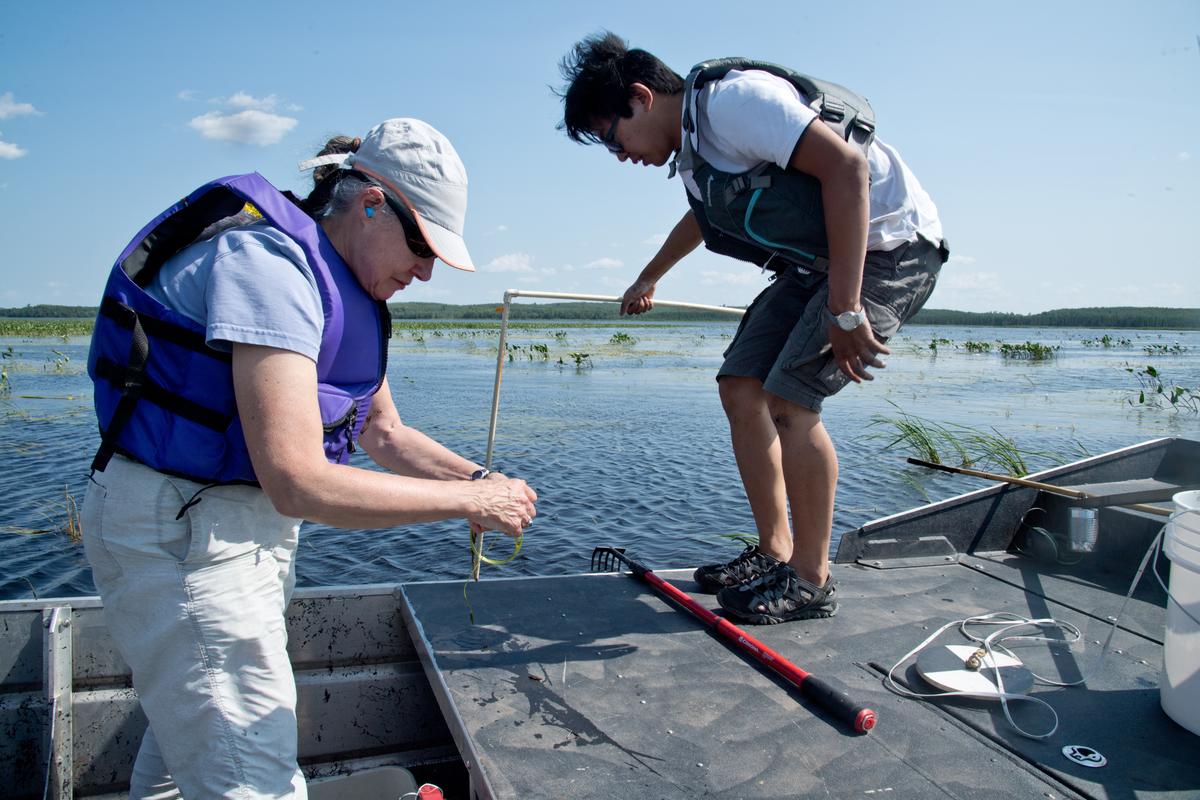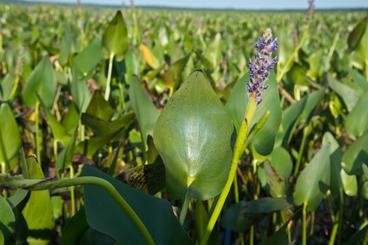Big Rice Lake, northeast of Virginia, Minn., could be called Pickerel Weed Lake. The wild rice stands that likely gave the lake its name are thin and scattered. Large portions of the lake are thick with pickerel weed.
“I assume the water level has been altered at some point, giving the pickerel weed an opportunity to get established,” said NRRI plant ecologist Carol Reschke. “There are still areas of wild rice on the lake, but it’s sparse. Not enough get out there and harvest.”
Efforts in Minnesota to restore wild rice haven’t been consistent. In some lakes it came back beautifully, in other places competing perennial plants – mainly pickerel weed and narrow-leaf cattails – have won out. Why? That’s what Reschke and NRRI environmental engineer Chanlan Chun are trying to figure out.
“What makes a healthy environment for an annual plant like wild rice to outcompete perennial plants?” Reschke asked. “Wild rice has to produce seeds and start over each year, while the weeds have big root systems and just grow back each year.”
To get a better understanding, the science team heads out by air boat or canoe to six sites – some with healthy wild rice stands, some with sparse stands. University Water Resources Science graduate student Tyler Untiedt is charged with gathering sediment around root systems of both the competing plants and the wild rice plants at each site. The chemistry of the sediment and microbes associated with the roots are carefully analyzed, along with water quality.
“Microbes have dynamic relationships with plants,” explained Chun. “They’re studied extensively for their roles in agriculture, for instance. But little is known about microbes’ role in aquatic native and invasive plants.”
Reschke and her crew are going to the same six sites to document what plants are growing there and the density of wild rice. Placing her floating, rectangular meter plot, she writes down what plants are present and counts the individual rice stems in the plot. Wild rice managers consider 30 stems per half square meter enough to go out and harvest. Some healthy wild rice sites are producing almost 70 stems per half meter, while others have only one or two stems, like on Big Rice Lake.By comparing the microbial community, sediment chemistry and plant communities of the dense wild rice stands to the sparse sites, this three year study, now in its second year, will provide data to wild rice managers, state agencies and the public.
“Wild rice is culturally significant, it’s Minnesota’s state grain, but it’s also ecologically important as food for wildlife and habitat,” said Chun. “We hope to find out why some of the restoration efforts worked, while others didn’t.”
Funding for this research is provided by the Minnesota Environment and Natural Resources Trust Fund as recommended by the Legislative-Citizen Commission on Minnesota Resources (LCCMR).

